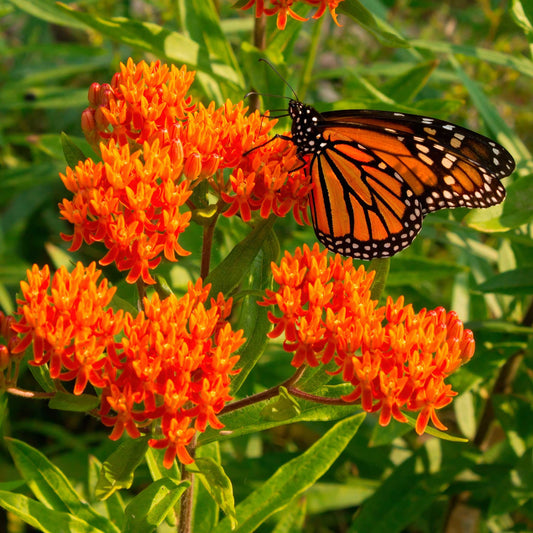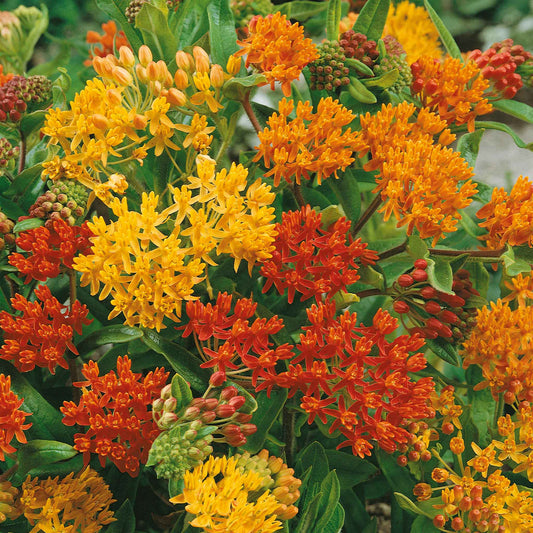-
main-collection-product-grid

Butterfly Milkweed Seeds
This is no noxious weed, but a beneficial wildflowerButterfly Milkweed Seeds
This is no noxious weed, but a beneficial wildflowerRegular price As Low As $6.99Regular priceUnit price per -
main-collection-product-grid

Swamp Milkweed Seeds - White
This native wildflower blooms from midsummer into fallSwamp Milkweed Seeds - White
This native wildflower blooms from midsummer into fallRegular price As Low As $6.99Regular priceUnit price per -
main-collection-product-grid

Swamp Milkweed Seeds - Carmine
A tall heirloom cultivar that boasts fragrant pink floretsSwamp Milkweed Seeds - Carmine
A tall heirloom cultivar that boasts fragrant pink floretsRegular price As Low As $6.99Regular priceUnit price per -
main-collection-product-grid

Asclepias Seeds - Mix
No butterfly garden is complete without this perennial wildflowerAsclepias Seeds - Mix
No butterfly garden is complete without this perennial wildflowerRegular price As Low As $6.99Regular priceUnit price per -
main-collection-product-grid

Bloodflower / Sunset Flower Seeds
Scarlet star-shaped petals framed by spiky foliage make one of our most unique offeringsBloodflower / Sunset Flower Seeds
Scarlet star-shaped petals framed by spiky foliage make one of our most unique offeringsRegular price As Low As $5.99Regular priceUnit price per
What we love about asclepias
- Fragrant and attracts hummingbirds
- Deer and rabbit resistant
- Works well for cut flower arrangements as well as dried flowers
- Low-maintenance
the history of asclepias
Formally described by Carl Linnaeus after Asclepius, the Greek god of healing, asclepias is a genus of herbaceous, flowering plants known as milkweeds. Named so for the milky substance that they exude when cells are damaged. There are around 200 species in the genus, which are found all throughout Africa, North America, and South America. Members of this family produce some of the most magnificent and complex flowers in the plant world. A gynostegium enclosed by a five-membrane corona is shown when five petals rebound backwards. The corona is made up of five pairs of hoods and horns, with the hood serving as a sheath for the inner horn. Between the hoods are pollinia-holding glands. The size, form, and color of the horns and hoods are frequently used to identify species in the Asclepias genus.
Fun facts about asclepias
In this genus, pollination is conducted in an unconventional way. Rather than being individual grains or tetrads, pollen is gathered into complex structures called pollinia (or "pollen sacs"), as is the case with most plants. Flower-visiting insects such as bees, wasps, and butterflies insert their feet or mouth parts into one of the five openings created by adjacent anthers in each flower. When the pollinator flies away, the bases of the pollinia mechanically adhere to the insect, allowing a pair of pollen sacs to be pulled free when the pollinator flies away, assuming the insect is large enough to produce the required pulling power.
when and how to grow asclepias seeds
Asclepias is a hardy plant that is native to US swamps and grows easily in consistently wet or damp soils that drain well and are joined by full sun. Be sure to plant in a location that is not visited by pets, as the sap of asclepias is toxic when cut. These flowers should be planted outdoors after the first frost begins in the fall in order to cold-stratify the seeds in time for the spring. Alternatively, you can start the seeds indoors after refrigerating them for six to eight weeks before sowing. Once you've selected your planting location, plant the seeds 1/4 inch deep into the soil and water lightly.
When planted in the proper environment, asclepias can live for several years. Keep in mind that it will also self seed in the late fall. To control this, simply remove all seed pods in the early fall before they release. Fertilization is not necessary. To reduce competition for weeds or other unwanted plants, place mulch around each plant.
For more information about planting, growing, and caring for asclepias, see the Asclepias Seeds Planting Guide.




